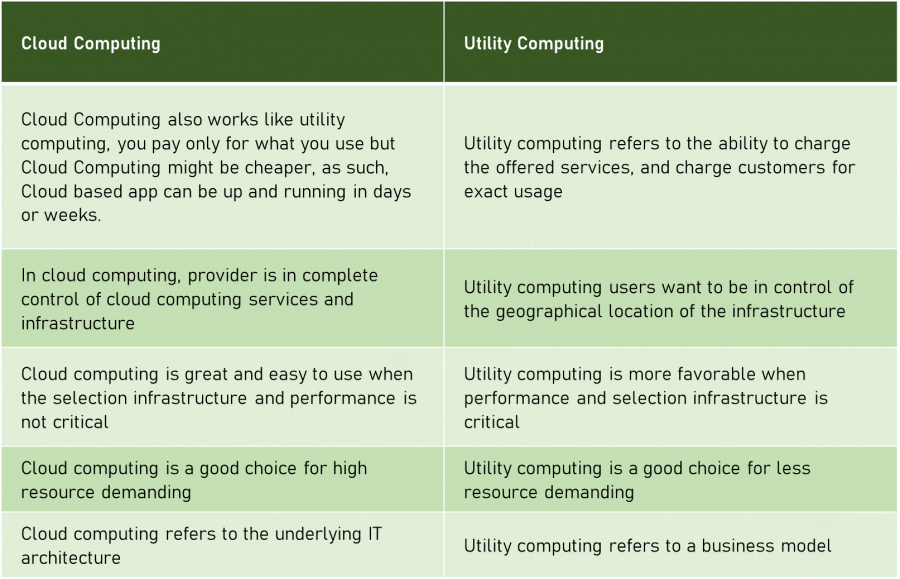Understanding Cloud Services: What is cloud computing?
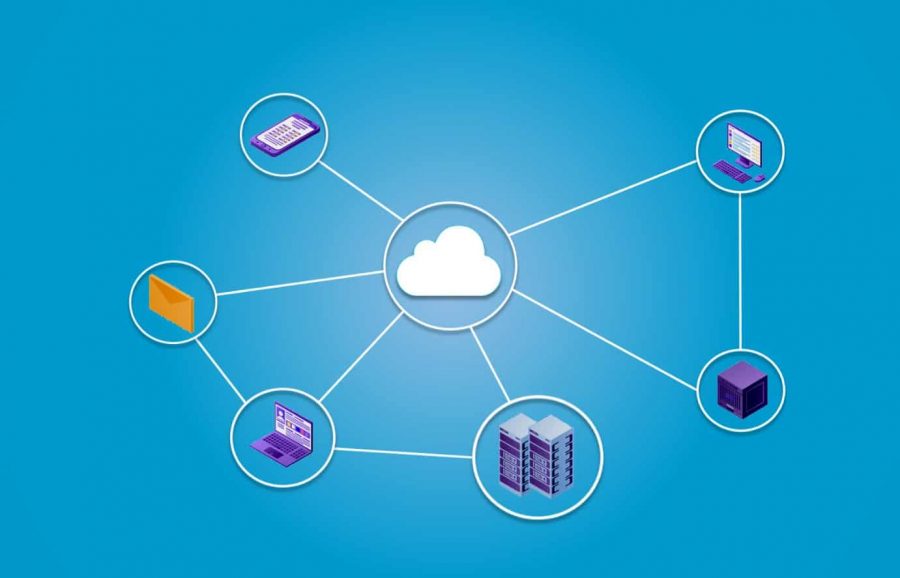
Cloud computing, also often called simply ‘the cloud’, plays a crucial role in enabling cost efficiencies, improved work practices and delivering digital transformation projects. But how do you define cloud computing? And what is the difference between SaaS, PaaS, or IaaS? Which cloud delivery model is suited to your business, and how do you address data privacy concerns? Here we separate the cloud myths from the facts and explain everything you need to know about cloud computing.
On this page:
- What is Cloud Computing?
- Why Cloud Computing?
- Benefits of Cloud Computing
- How does Cloud Computing work?
- Cloud service delivery models – SaaS, PaaS & IaaS
- Cloud Deployment Models
- Cloud Computing and Virtualization
- Cloud computing: Security and privacy concerns
- Cloud computing vs other computing provisioning models
What is Cloud Computing?
Cloud computing is the distribution of computing resources – including servers, applications, networks, databases, analytics, data-centres over the Internet. By doing so, the cloud provides businesses and organizations with improved access, in terms of speed and flexibility, to the computing resources and capabilities that they require.
With cloud computing, scalable and flexible IT-related capabilities are provided as a service to external customers using Internet technologies. Cloud computing offers private or public services over the Internet or via a private connection. Users access resources, software and applications through a web browser rather than hosting software locally within their organization.
Businesses shouldn’t view cloud computing as a single entity, but rather a selection of wide-ranging technology trends. Collectively, these alter how organizations manage, pay for, design, operate, control and secure their IT. Cloud computing produces a method of managing computer resources via the Internet, effectively are renting from a service provider, and paying only for what is needed.
With cloud computing, scalable and flexible IT-related capabilities are provided as a service to external customers using Internet technologies. Cloud computing offers private or public services over the Internet or via a private connection, and users access resources, software and applications through a web browser rather than hosting software locally within their own organisation.
A style of computing whereby scalable and elastic IT-related capabilities are delivered, using Internet technologies, as a service to customers.
A definition of Cloud Computing
Gartner
Why Cloud Computing?
The increase in data, driven by the rise in computer and mobile usage, has meant that storage of data has become a priority for many businesses across multiple sectors. Large and small scale businesses attribute a high value to the data they obtain, spending a significant quantity of money to its maintenance.
Such maintenance has traditionally required substantial investment in IT support, knowledge and appropriate IT infrastructure. Due to these barriers, many small businesses were unable to afford the high cost of maintaining an in-house IT infrastructure and back up support services for acquiring, maintaining, and managing that data.
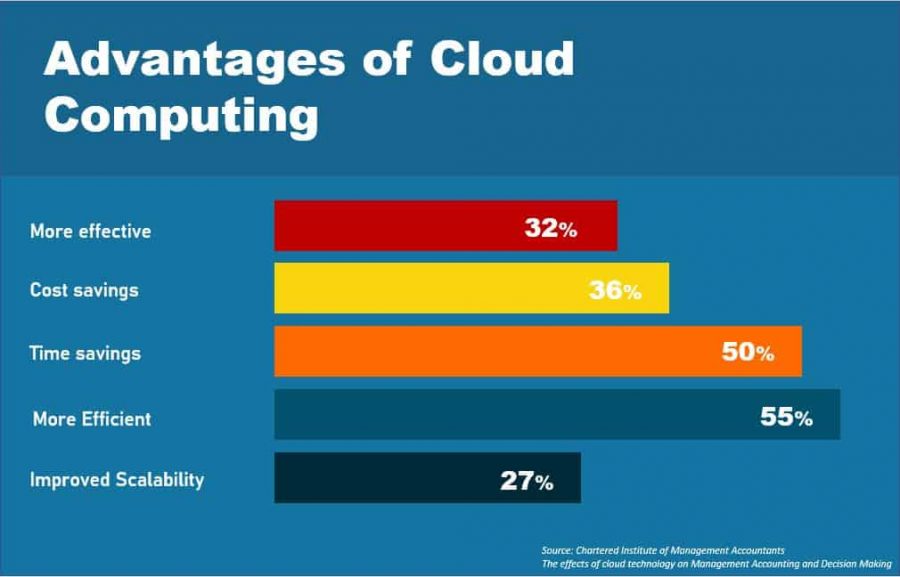
For organizations, Cloud Computing is a cost-effective alternative, which mitigates the need for costly overheads in IT infrastructure and associate support services. Cloud computing further provides efficiency in storing data, computation and overall less maintenance cost, with the service provider responsible for any technical faults.
Due to their scalability and cost-effectiveness, cloud technologies are a core enabler scaled and scalable digital transformation initiatives.
Benefits of Cloud Computing
Cloud technology frees up resources, such as hardware and software, which are often the most considerable costs for businesses – making it much easier for small businesses to operate and grow.
Since cloud computing provides the computing infrastructure, which is hosted on a remote machine, businesses no longer have to maintain these physical resources – a major headache for small enterprises. Another benefit is the ability to manage and monitor the resources on a virtual machine, making it simple for the employees to understand what is happening.
Other key benefits of cloud computing include:
- Decrease IT infrastructure and computer overheads
- Decrease the frequency of maintenance issues
- Maintain software with the latest updates
- Improved compatibility between operating systems
- Backup and recovery
- Enhanced performance and scalability
- Increased storage capacity
- A greater degree of data safety
As with all technology, the Cloud has its limitations, both technical and otherwise, presenting several disadvantages of cloud technology. The primary disadvantage is that it’s dependent on the size of your organization since a larger company will typically require more resources than one that is just starting.
Read more about the advantages of cloud computing
How does Cloud Computing work?
Instead of using expensive physical hardware and software for computing needs, businesses simply pay a subscription fee for the use of virtual resources as per their needs.
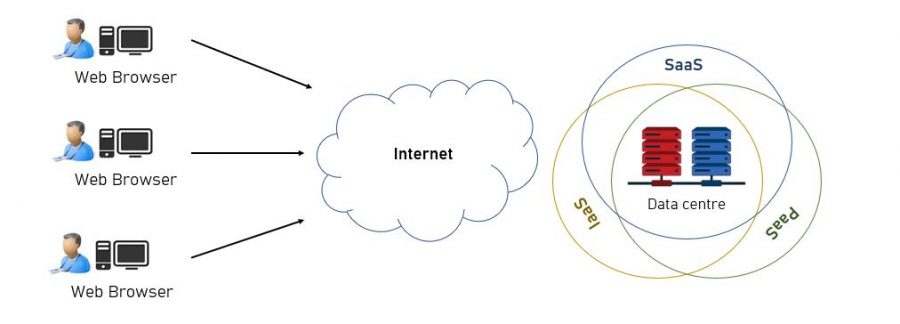
Cloud computing consists of four major elements:
- Web-enabled devices such as laptops, tablets, or mobile devices
- Broadband Internet connectivity
- Services consisting of software and hardware resources obtained online (typically categorised as SaaS, PaaS and IaaS).
- Large-scale data centres are hosted on different servers.
Documents and emails or client details and apps can be stored online ‘in the cloud’ and can be accessed on-demand via the Internet through a web browser.
However, while cloud technology is an effective way of managing computing requirements, it does have its drawbacks. Cloud providers typically charge a monthly or yearly fee for access to their resources. Fortunately, since there are several different providers out there, the price may vary from provider to provider – or even between various cloud service providers at the same time.
Cloud service delivery models – SaaS, PaaS & IaaS
There are typically three primary cloud computing service models available, namely:
- Software as a Service (SaaS)
- Platform as a Service (PaaS)
- Infrastructure as a Service (IaaS)
Each of these cloud service models has its benefits. Businesses should understand the differences between SaaS, PaaS, and IaaS. Depending on the requirements, the business can use one service model or all three service models.
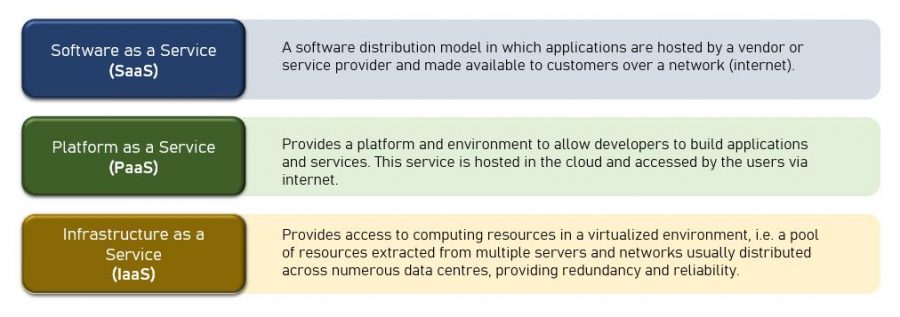
Each cloud model provides specific features and functionalities. Whether your organization needs cloud-based software for storage options, a flexible platform for developing customised applications, or control over your infrastructure without the overheads to physically maintaining it, there is a cloud service to meet your business’ needs.
Presented below are each of the cloud service models in more detail.
Software as a Service (SaaS)
For most small businesses and startups, Software as a Service (SaaS) is the simplest form of cloud computing available. SaaS allows software hosted on remote servers to be accessed via the Internet. SaaS enables you to run applications via your web browser and save, or take back files outside the business.
With SaaS, the vendor is responsible for managing and maintaining the application and supporting infrastructure.
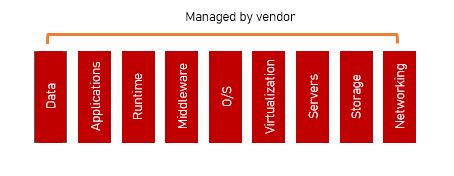
Examples of SaaS include:
- Email tools – such as Gmail
- Productivity software, for example, Office365, or GSuite
- CRM system, or cloud accounting software
- Collaborative tools, such as video conferencing
SaaS gives increased flexibility when compared to traditional computer systems, allowing businesses to scale the computing requirements quickly and efficiently to meet needs.
For instance, SaaS provides speed and flexibility when businesses need to launch e-commerce quickly, short-term projects which need fast, easy, and cost-effective collaboration, applications that are used infrequently, such as tax software and applications which require both web and mobile access. Due to the flexibility and efficiency offered by SaaS, SaaS is often the most beneficial option for small businesses.
Platform as a Service (PaaS)
PaaS is designed to support application development. PaaS involves using online application development capabilities to create and adapt applications to meet your business requirements. The software development tools and hardware that you need to attain this will be called ‘cloudware’.
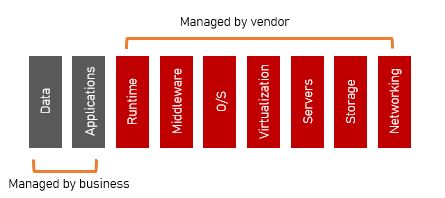
Popular examples of PaaS include:
- Apache Stratos
- AWS Elastic Beanstalk,
- Google App Engine
- OpenShift
- Windows Azure
PaaS typically includes software support and management services, storage, networking, deploying, testing, collaborating, hosting and maintaining applications. PaaS is particularly beneficial if businesses need to create tailored cloud applications for their organizations. PaaS is practical, occasionally even essential, for custom applications development.
For instance, when multiple developers are working on the same development project, PaaS can streamline workflows. PaaS can provide speed and flexibility to the entire process if the inclusion of other vendors is required. Using Platform as a Service for rapidly developing or deploying an app can reduce costs and simplify some common challenges during app development.
Infrastructure as a Service (IaaS)
IaaS lets businesses use virtual hardware resources to recreate their computer infrastructure, including:
- Server space
- Data storage facilities
- Networking hardware
As with the other cloud service models, IaaS allows you to change or expand the storage capacity that you need. Other benefits include a reduction in computer costs, scalable hardware requirements, or requiring the in-house expertise to maintain it.
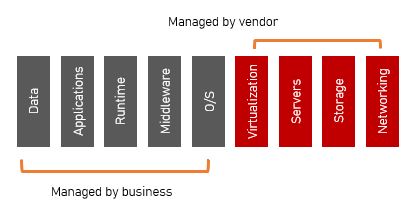
IaaS offers plenty of flexibility and scalability, offering a viable alternative for startups and small companies to spending time and money on purchasing and creating hardware and software. For larger organizations who may wish to retain control over their applications and infrastructure, IaaS offers the ability to buy only what they consume.
Organizations experiencing rapid growth like the scalability IaaS offers, and the ability it provides to scale specific hardware and software resources quickly as their requirements develop.
Cloud Deployment Models
Several cloud deployment models have been defined, varying in the degree of privacy offered, and underlying resources and service delivery mechanisms. A single cloud deployment model is unlikely to cover all needs. Presented below are 3 of the standard cloud deployment models:
Cloud computing has four different structures in terms of access and options for deployment:
- Public Cloud – services and infrastructure available to the public and produced off-site on the Internet with a third-party provider. Examples include Microsoft Azure, Google’s Cloud, Amazon Web Services.Public cloud offers no distinct private resource pools that can be used by anyone, and are publicly accessible.
- Private Cloud – services and infrastructure are given to an individual client and adequately maintained on a private network either at the service provider’s data centre or in-house. Private Cloud can be used by a business in numerous ways, but can only be used by that particular.
- Hybrid Cloud – Usually a “mix and match” of public and private Cloud. Businesses can choose different sources of resources based on technical or business requirements. The average small and medium business manages 35% of workloads in the private Cloud and 43% in the public Cloud. Opting for a hybrid cloud model allows the business the benefits offered by the public Cloud while retaining the privacy for specific needs.
To figure out what cloud model is the best for your business, you might want to consider:
- How you currently use your computer systems and applications.
- What type of services that you might want to move to the Cloud.
- Different service levels and support that you might need.
- Budget
- Data protection compliance considerations.
Also read: Private, Public or Hybrid: Which Type of Cloud is Best for Your Business?
Cloud Computing and Virtualization
Virtualization is the core enabling technology for Cloud Computing. Virtualization partitions a single physical server into multiple logical servers. Each logical server can act independently of one another, running an operating system and applications like a physical server.
Companies such as VMWare and Microsoft provide specialist virtualisation software, which enables and manages the partitioning of the physical servers. Virtualization technology enables data centres to deploy fast and cost-effective infrastructures.
For businesses, particularly those needing to customise applications to improve workflows, virtualization allows testing with multiple different operating systems, applications and resource permutations, for relatively little outlay and long term commitment to the hardware.
Virtualization is focused in three main areas:
- Network Virtualization: A method of combining the network resources by splitting up the available bandwidth into channels. Every channel is independent of one another and can be assigned to a specific server or device in real-time.
- Storage Virtualization: A system where the physical storage from numerous network storage devices has been pooled into a single manageable resource. This pooled storage appears as a single storage device and can be managed from a central console. Storage area networks (SANs) commonly utilise storage virtualization.
- Server Virtualization: The masking of server resources like processors, RAM, operating system, etc., from server users. Server virtualisation can include several operating systems, processors, and individual physical servers. Server virtualization intends to increase resource sharing while reducing the burden and complexity of computation from users.
Virtualisation is crucial for the Cloud due to its ability to decouple the software from the hardware. For instance, servers can use virtual memory which is extra memory from the hard disk, since typically a hard disk has much more space than memory (RAM). While virtual disks can be slower than real memory, appropriately managed, the substitution is unnoticeable.
IBM’s video, presented below, provides a good introduction to virtualisation:
Virtualization is a cost-effective and effective way to utilize IT infrastructure resources. Without virtualization, servers only use a small part of their processing power, resulting in underutilised resources. Data centres can become overcrowded with idle infrastructure, wasting resources and power.
Virtualisation increases the utilisation of resources by making each virtual devices (network, storage or server) act as a physical equivalent, expanding the capacity of each physical machine.
Cloud computing: Security and privacy concerns
As with any technology, cloud computing also has its fair share of concerns, particularly regarding security.
A key concern is whether the customer’s unencrypted data, whether on a disk, in memory or transmitted over the network, can be accessed by the cloud providers themselves.
The TCG ( Trusted Computing Group) has been established to mitigate these concerns, aiming to standardise the security for systems, networks and data. The TCG is a non-profit organization which advocates secure computing and support regulatory compliance.
TCG members include several significant cloud service providers. TCG technologies aim to protect business-critical data and systems, promote secure authentication and user identities protection, and establish strong machine identity and network integrity.

While there are specific measures that can improve the level of data privacy in cloud computing, privacy concerns present a strong barrier for many businesses and users seeking to adopt Cloud technology.
Such concerns are valid when you consider that businesses are storing their data with programs hosted on someone else’s hardware, thereby losing a degree of control over their sensitive information. In such scenarios, the responsibility for protecting that data from cybercriminals and data breaches can be confusing with an additional party, in the form of the hosting company, involved.
The nature of the cloud, and the, more importantly, the distributed infrastructure which supports it, also raises concerns of lawful access. In some instances, depending on where the data resides, national governments may choose to search the data without notifying the data owner, thereby raising concerns about data privacy.
Privacy and security are only as strong as its weakest link. Cloud computing increases the risk that a security breach may occur. To protect data confidentiality, administrative and legal controls should be implemented and maintained. A good starting point for any business is the information security and data privacy frameworks, such as ISO27001, GDPR and PCI DSS.
Read further about Data Protection and Cloud Computing
Cloud computing vs other computing provisioning models
Cloud computing shares characteristics with other distributed computing models, particularly grid computing and utility computing, most notably the provision of metrics for the services used, and the intent to address QoS (quality of service) and reliability problems of grid computing models.
Presented below are some key differences Cloud computing has with alternative forms of distributed computing:
The Cloud Vs Grid Computing
The electricity provided to our home travels through power stations, transformers, power lines and transmission stations. Collectively, these components are known as ‘Power Grid’.
Similarly, ‘Grid Computing’ is a network of computing resources working in unison to operate as a whole. Grid computing is typically used in scientific research to harness the vast computing resources it provides.
While similar, cloud computing is often confused with grid computing. The critical difference between the two is the manner in which the functionality is offered. Presented below are the differences between grid computing and cloud computing:
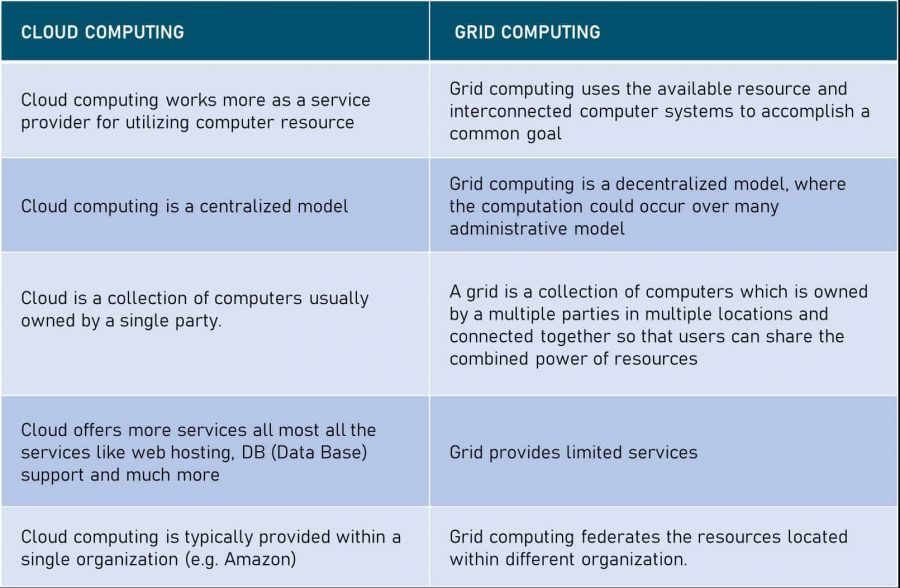
Cloud Vs Utility Computing
Cloud computing shares concepts with both utility computing and grid computing,
Utility computing uses an on-demand, pay per use billing method to provide a computing service. The customer obtains access to an almost unlimited supply of computing solutions via a virtual private network (VPN) or over the Internet, whenever required.
Through utility computing, small businesses with a limited budget can easily use software, such as Customer Relationship Management software (CRM) without having to invest heavily in infrastructure to maintain their clientele base.
